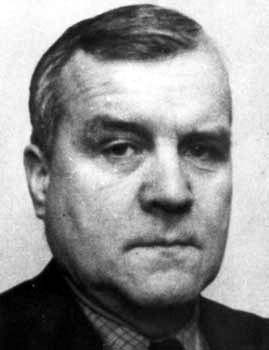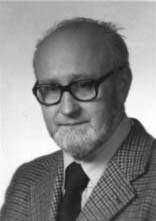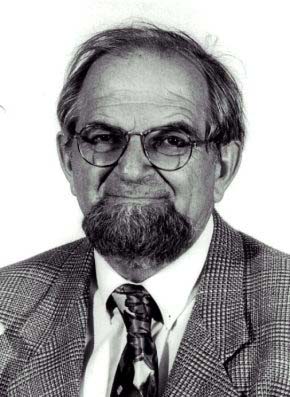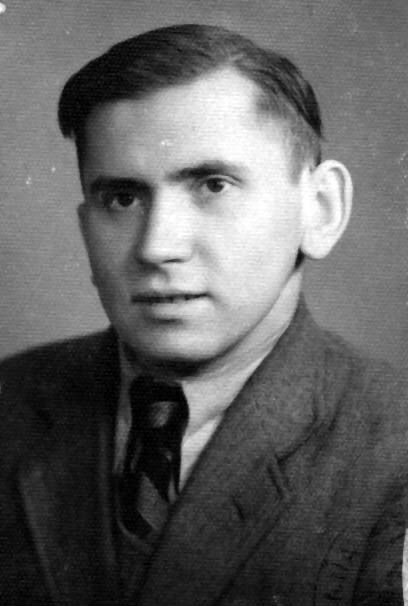|
Biochemistry is among the most rapidly developing fields of biomedical sciences. It is the study the molecular structure of living organisms, their metabolism and metabolic pathway control mechanisms. Input for biochemistry research come from related fields of science, mainly chemistry and biophysics, while its outputs are the theoretical framework and investigative tools for other biomedical sciences, such as physiology, pharmacology, toxicology, genetics, cell biology, microbiology, immunology, etc. Within the general field of biochemistry, new scientific disciplines developed, such as molecular biology and biotechnology. The Medical University of Białystok is certainly a notable player in the field.
What is today's Department of Medical Biochemistry at the Medical University of Białystok was opened in 1953 as the Department of Physiological Chemistry, with Prof. Tadeusz Czystohorski leading the new Department. The initial years were spent on work organization, hardware development and teaching efforts. However, during that pioneering time, the extent of research work at the Department was strongly limited, for such reasons as personnel shortages, lack of equipment or reagents, and Prof. Czystochorski's chronic illness. Prof. Wiesław Tysarowski was leading the Department afterwards, albeit for two years only.
 |
| prof. Tadeusz Czystochorski |
The breakthrough came in 1960 when the Department was taken over by young (34 year old) Prof. Stefan Niewiarowski, who had formerly worked at the Institute of Haematology in Warsaw. Professor Niewiarowski promoted a new research trend: biochemistry of blood coagulation and haemostasis. A busy research team formed under his leadship, and a lot of their work on the new area of interest was published in scientific journals worlwide.
 |
| prof. Wiesław Tysarowski |
1960-1968 was period of significant discoveries at the Department of Physiological Chemistry, including: isolation and characterization of platelet factor-4; discovery of heavy metals' (Hg, Pb) inhibitory action on fibrinolysis; synthesis of ε-aminocaproic acid and characterization of its anti-fibrinolytic properties; discovery of the effect of XII factor activation by collagen; characterization of fibrin monomer soluble complexes; triggering reactions of platelet intracellular components during aggregation; isolation and characterization of plasminogen from leucocytes. Other trends in research were pursued simultaneously as well, like enzymology or nucleic acid biochemistry. At least two post-doctorial (habilitation) papers were written on the outcomes of research in these areas. During that time, the Department was involved in proactive collaboration with many national and international research centres. It was frequently visited by outstanding biochemists specializing in clotting and fibrinolysis. It was the place of training for haemostasis specialists and an opportunity for researchers from other institutions.
 |
| prof. Stefan Niewiarowski |
At the end of 1969, the Department was renamed to Department of Biochemistry, with Prof. Wiktor Rzeczycki from the Medical University of Gdańsk as the new leader, who remained in his Head of Department position until 1980. During that period, some Department staff continued their research in the same fields, while others committed to in bioenergetics, alkaline proteins, aminotransferases, proteolytic enzymes and their inhibitors and extracellular matrix biochemistry. Five researchers received the so-called "habilitated" PhD degree, four of them taking the positions of directors at the newly formed Pharmacy Faculty units.
 |
| prof. Wiktor Rzeczycki |
Prof. Edward Bańkowski was the Department’s director from December 1980 to September 2012. The primary research areas included extracellular matrix biochemistry, especially tumour collagen and glycosaminoglycans, pathobiochemistry of blood vessels in atherosclerosis, connective tissue from vessel grafts, pathobiochemistry of umbilical cord during pre-eclampsia, metabolism regulation by peptide growth factors and their accumulation in the extracellular matrix. More faculty members were promoted. Three researchers received the PhD habil. in Medical Sciences.The international community showed their recognition of the Department’s achievements by designing it to host the XII Meeting of the Federation of the European Connective Tissue Societies (FECTS) in 1990. The Meeting gathered more than 350 attendees from all the European countries associated in FECTS, as well as from Japan, Israel and the USA.
In October 2012, Prof. Krzysztof Sobolewski became the Head of the Department.
 |
| prof. Edward Bańkowski |
It should be emphasized that the majority of the professors currently employed at the Medical University of Bialłystok, as well as many faculty members at other institutions, have directly or indirectly come, from our Department. They are, in alphabetical order: Edward Bańkowski, Ryszard Farbiszewski, Władysław Gałasiński, Leokadia Jaroszewicz, Roman Lorenc, Michał Myśliwiec, Stefan Niewiarowski, Jerzy Pałka, Aleksander Popławski, Jan Prokopowicz, Wiktor Rzeczycki, Marian Tomasiak, Nina Wołosowicz, Krzysztof Worowski. They made it possible to open the Institute of Laboratory Diagnostics, which constituted the core of the Faculty of Pharmacy with the Division of Medical Analytics. Certain units of organization at the Faculty are still pursuing the research areas inherited from the Department of Medical Biochemistry.
The Department of Medical Biochemistry and its people played an essential part in the development of the Medical University in Białystok. They are now a significant group of Department managers in charge of basic medical and pharmaceutical sciences. They have made a huge contribution to the scientific development of some clinical disciplines.


